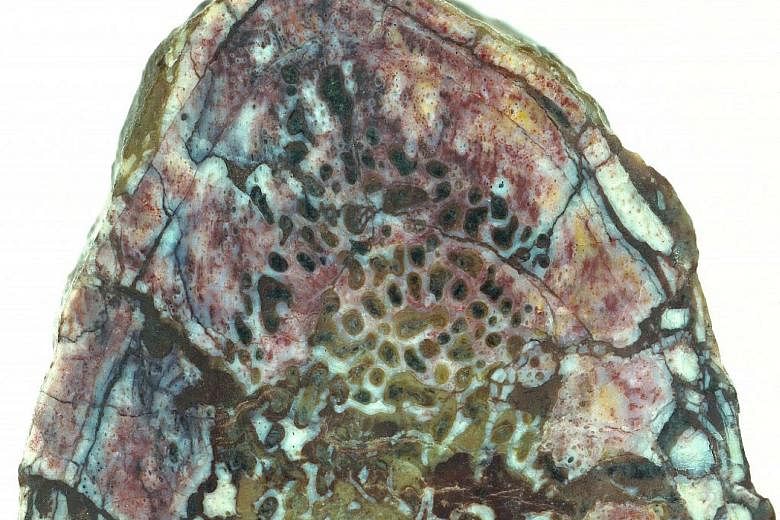WASHINGTON • The Lufengosaurus - a long-necked herbivore that walked on two feet in what is now south-western China - has been dead for 195 million years. But scientists think a small bit of soft tissue still clings to those old bones.
Writing in the journal Nature this week, palaeontologists reported the discovery of a tiny amount of preserved collagen - the fibrous protein that makes up cartilage and connective tissue - in the rib of this long-dead Jurassic dinosaur. The find could push back the age of the oldest known dinosaur soft tissue by 100 million years. It could also suggest a potential new field of palaeontology - one where scientists use ancient preserved proteins to understand dinosaurs more thoroughly than ever before.
For all but the last decade of palaeontology, scientists have based their understanding of dinosaurs on fossilised bone. Unlike soft tissue (muscle, skin, blood vessels), which decays, bone lasts long enough that minerals from the surrounding mud and water can slowly replace the minerals inside cells, turning the hard tissue to rock.
Though fossils illuminate a great deal about the appearance and behaviour of extinct animals, they cannot be examined with the tools of modern molecular biology. At least, they could not until 2005, when North Carolina State University researcher Mary Schweitzer discovered preserved blood and collagen in the bones of a 68-million-year-old Tyrranosaurus rex. Since then, there have been a handful of other soft tissue finds in fossils from the late Cretaceous, the period that ended with a mass extinction 65 million years ago after an asteroid hit the Earth.
More and more palaeontologists are now probing for soft tissue in their fossil finds, including Dr Robert Reisz, a researcher at the University of Toronto Mississauga. In 2013, he wrote about the discovery of possible organic remains inside an embryonic Lufengosaurus. But the material could not be identified more specifically, so he and his colleagues set off in search of some better preserved tissue.
In this latest study, they say they have found it. Using a synchrotron to create high-power beams of infrared light, Dr Reisz's collaborators at the National Synchrotron Radiation Research Centre in Taiwan probed the vascular canals of their Lufengosaurus rib, which once contained blood vessels and protein. By analysing the wavelengths of light that bounced back, they could figure out the molecular composition of the material inside the rib. It contained several key proteins characteristically found in collagen, the oldest evidence of proteins ever detected.
The scientists also found crystals of haematite, the mineral form of iron oxide. As the rocks around the fossil are iron-poor, Dr Reisz said the haematite probably comes from the iron-rich blood cells of the dead dinosaur. "We don't have the blood cells," he said. "But we do have the iron that was in the blood."
WASHINGTON POST

